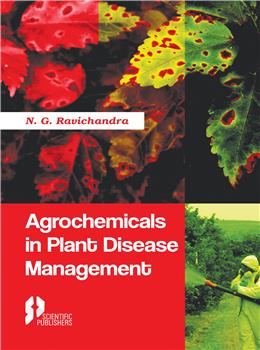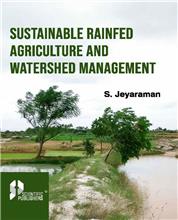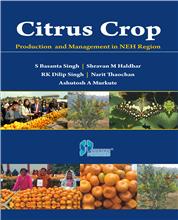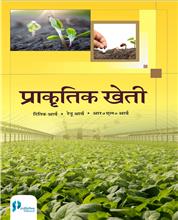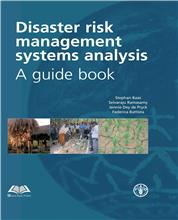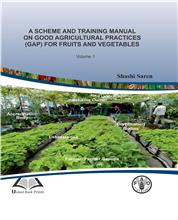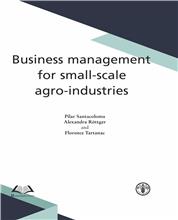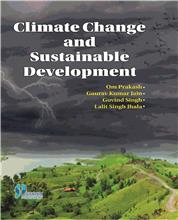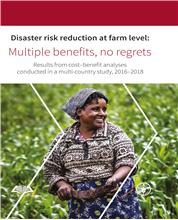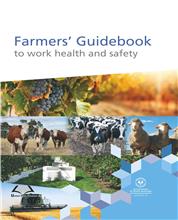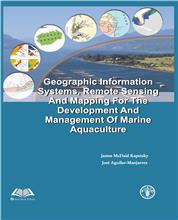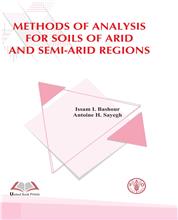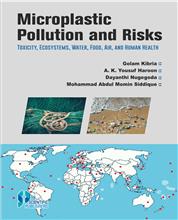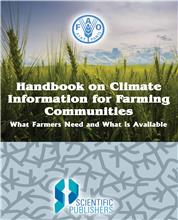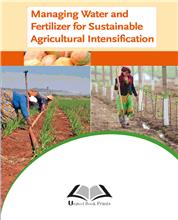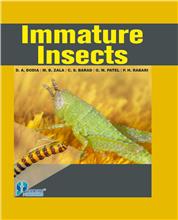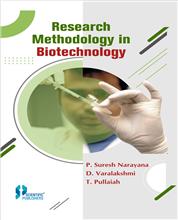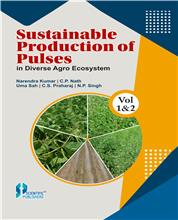Preface
Acknowledgement
Foreword
1. Agrochemicals in Plant Disease Management:Current Scenario
1.1 Introduction
1.2 Global market overview, distribution and scenario
1.3 Global trade of crop protection products
1.4 Agrochemical industry in India
1.5 Agrochemicals global market
1.6 Agrochemicals firms
1.7 Agrochemicals research in India
1.7.1 Aspects of agrochemical research: (Technical /Formulations/Metabolites)
1.8 Growth drivers, challenges, and upcoming trends
1.9 Challenges faced by the global agrochemical industry
1.10 Challenges faced by the Indian agrochemical industries
1.10.1 Major opportunities
1.10.2 Threats
1.10.3 Facing the challenges
1.11 Classified list of agrochemicals/pesticides
1.11.1 Major fungicide groups
1.11.2 Common bactericides
1.11.3 Nematicides
1.12 The future of agrochemicals in public health programmes
References
2. History and Development of Agrochemicals
2.1 Definition of ‘agrochemical’
2.2 Major lists of agrochemcials
2.3 Fungicides
2.3.1 History of fungicide development
2.3.2 Agrochemicals in ancient times
2.3.3 Modern agrochemicals
2.3.4 Milestone fungicides
2.3.5 The benefits and risks of fungicides
2.3.6 An overview of fungicide development and usage
2.3.7 Major fungicides groups
2.3.7.1 Benzimidazoles
2.3.7.2 Morpholines
2.3.7.3 Piperazines
2.3.7.4 Imidazoles
2.3.7.5. Pyrimidines
2.3.7.6 Triazoles
2.3.7.7 Anilides
2.3.7.8 Strobilurins
2.3.8 Major fungicides
2.3.8.1 1940–1960
2.3.8.2 1960–1970
2.3.8.3 1970–1980
2.3.8.4 1980–2000
2.3.8.5 2000–present
2.3.9 Sources from natural products
2.3.10 History and development of systemic fungicides
2.3.11 Future trends
2.4 Bactericides (Antibiotics)
2.4.1 History of antibiotics before fleming’s discovery of penicillin
2.4.2 History of antibiotics after the mid-1940s
2.4.3 Beta-lactam antibiotics
2.4.4 Penicillins
2.4.5 Cefalosporins
2.4.6 Carbapenems
2.4.7 Glycopeptides
2.4.8 Aminoglycosides
2.4.9 (Fluoro) Quinolones
2.4.10 Nitroimidazoles
2.4.11 Chloramphenicol
2.4.12 Co-Trimoxazol
2.4.13 Some examples of antibiotics derived from fungi
2.4.14 Further breakthroughs after penicillin
2.4.15 Antibiotic resistance and a glance into the future of antibiotics
2.4.16 Modes of action and resistance mechanisms of commonly used antibiotics
2.5 Nematicides
2.5.1 History and development
2.5.2 Major groups of nematicides
2.5.2.1 Halogenated hydrocarbons (Fumigants/Volatile compounds)
2.5.2.2 Non-fumigant nematicides
2.5.2.3 Dithiocarbomates
2.5.2.4 Unclassified nematicides
2.5.2.5 Compounds with nematicidal activity
2.5.2.6 Botanical nematicides
2.5.3 Methods of application of systemic nematicides
2.5.4 Nematicide ecology
2.5.6 Modes of action of nematicides
2.5.7 Nematicide movement in soil
2.5.8 Compendium of agrochemicals’ common names
2.5.9 Fungicides and bactericides–alphabetical listing with trade names
References
3. Formulations, Application and Phytotoxicityof Agrochemicals
3.1 Formulations
3.1.1 General formulation types
3.1.2 Formulation selection considerations
3.2 The formulation process
3.2.1 Liquid formulations
3.2.2 Dry/Solid formulations
3.2.3 Agrochemical /Fertilizer combinations
3.2.4 Fumigants
3.2.5 Adjuvants
3.2.6 Formulations and label information
3.2.7 Glossary
3.2.8 Inert ingredient
3.3 Application of agrochemicals
3.3.1 Sprayers (Hydraulic energy)
3.3.2 Sprayers (Gaseous energy)
3.3.3 Dusting equipment
3.3.4 Granule applicators
3.4 Spray nozzles
3.4.1 Single-fluid or hydraulic spray nozzles
3.4.2 Plain orifice nozzle
3.4.3 Shaped orifice nozzle
3.4.4 Surface impingement nozzle
3.4.5 Spiral spray nozzle
3.4.6 Pressure-swirl spray nozzles
3.4.7 Solid-cone Single-fluid nozzle
3.4.8 Flat fan nozzles
3.4.9 The tongue-type nozzle
3.4.10 Compound nozzle
3.4.11 Two-fluid nozzles
3.4.12 Internal-mix two-fluid nozzles
3.4.13 External-mix two-fluid nozzles
3.4.14 Control of two-fluid nozzles
3.4.15 Rotary atomizers
3.4.16 Ultrasonic automizers
3.4.17 Electrostatic
3.4.18 Hydraulic energy nozzles
3.5 Nozzle spray patterns
3.5.1 Hollow cone and solid cone nozzles
3.5.2 Flat spray nozzles
3.5.3 Even spray nozzles
3.5.4 Flooding nozzles
3.5.5 Multi-pattern spray nozzles
3.6 Nozzle performance factors
3.7 Spraying techniques
3.7.1 High volume spraying
3.7.2 Low volume spraying
3.7.3 Ultra low volume spraying
3.7.4 Electrostatic spraying
3.8 Dusters and dust applications
3.8.1 Manually operated dusters
3.8.2 Power operated dusters
3.8.3 Some simple plant protection equipment
3.8.4 Spray droplets, sampling and measurement
3.8.5 Care and maintenance of plant protection equipment
3.8.6 Problems of maintenance and repairs of equipment
3.8.7 Timing of spray
3.9 Ideal coverage
3.10 Spray efficiency and drift
3.11 Fungicide toxicology
3.12 Environmental fate
3.13 Environmental toxicology
3.14 Toxicity category and LD50/ LC50 values
3.15 Fungicides in order of their adverse effects
3.16 Assessment of ecological risks from fungicide use
3.17 Antibiotics and human health
3.18 Nematicides
3.18.1 Application methods
3.18.2 Factors affecting effectiveness of fumigants
3.19 Degradation of nematicides
3.19.1 Effects on non-target organisms
3.19.2 Environmental contamination
3.20 Movement and toxicity of nematicides in root zone
3.20.1 Toxicity and mode of action of nematicides
3.20.2 Dosage
3.20.3 Effect of tillage
3.21 Nematicide distribution
3.22 Plant uptake of systemic nematicides
3.23 Factors affecting nematicide efficacy
3.24 Nematicide ecology
3.25 Phytotoxicity
3.26 The future of nematicides
References
4. Classification and Modes of Action of Agrochemicals
4.1 Fungicides
4.2 Making the most of a fungicide application
4.3 General modes of action of fungicides
4.4 List of major fungicides (Alphabetically arranged)
4.5 Bactericides/Antibiotics
4.5.1 Sources of antibacterial agents
4.5.2 Antibiotic classification
4.5.3 Broad classes of antibiotics
4.5.4 Plant-derived compounds against bacteria
4.5.5 Registered antibiotics and their modes of action
4.5.6 The antimicrobial activity of plant extracts
4.5.7 General modes of action of bactericides
4.6 Nematicides
4.6.1 General classification
4.6.2 Methods of nematicide application
4.6.3 General modes of action of nematicides
4.6.4 The future
References
5. Registration and Regulation of Agrochemicals
5.1 Introduction
5.2 Registration of agrochemicals (excluding botanicals and bacterial chemicals)
5.3 United States Environmental Protection Agency (USEPA): Pesticide registration process
5.4 Biopesticide registration
5.5 Registration requirements and guidance
5.6 Types of studies required
5.7 Pesticide registration manual
5.8 Labelling requirements
5.9 Registration committee
5.10 Grant of license
5.11 List of forms
5.12 Guidelines for registration
5.13 Use and regulation of insecticides and pesticides
5.14 Guidelines on the data requirement for the grant of registration under the Insecticide Act, 1968
5.15 Computerized Registration of Pesticides (CROP) using SAP-LAP Framework
5.16 Sectors associated with the Insecticides Act, 1968 293
5.17 Fifty years of legislation 297
5.18 Flaws in registration 298
5.18.1 New registration 298
5.18.2 Re-registration 299
5.18.3 Tests and problems associated 299
5.19 Ecological risk assessment 302
5.20 Human health risk assessment 303
5.21 Models and databases used in pesticide risk assessment 304
5.22 Pesticide labels and labelling 305
5.23 Pesticide label and the material safety data sheet (MSDS) reading 307
5.24 Formats for pesticide labels
5.25 Calibration of pesticide equipment
5.25.1 Principles of calibration
5.25.2 General procedures for calibration
5.25.3 Calibration of equipment for typical vector control operations
5.26 Pesticide drift
5.27 Pesticide residues
5.28 Certified organic crops and farms
5.29 Fungicide Resistance Action Committee (FRAC)
5.30 New FRCC group
References
6. Safe Handling and use of Agrochemicals
6.1 Hazard
6.2 Categories of toxicity
6.3 Safety requirements for chemical industry
6.4 Storage standards
6.5 Precautions to be taken during chemical manufacturing
6.6 Precautions to be taken in chemical laboratory
6.7 First-aid treatment
6.8 Chemical toxicity
References
7. Compatibility and Persistence of Agrochemicals
7.1 Agrochemical mixtures
7.2 Types of interactions
7.3 Incompatibility
7.4 Proper mixing procedures
7.5 Types of incompatibility
7.6 Tank mixing guidelines
7.6.1 General principles for mixing pesticides
7.6.2 Specific mixtures to avoid
7.6.3 Considerations for tank mixes
7.6.4 Benefits, concerns and considerations of tank mixes
7.7 General rules on mixing chemicals
7.8 Compatibility chart of agrochemicals
7.9 Compatibility chart of pesticides, fungicides and biopesticides used in potato IPM
7.10 Reasons for incompatibility
7.11 Compatibility test
7.12 Agrochemical mixtures
7.13 Fungicides and insecticides mixture
7.14 Persistence of agrochemicals
7.15 Fate of agrochemicals in soil
7.16 Factors affecting the persistence of agrochemicals
7.16.1 Chemical factors
7.16.2 Plant factors
7.16.3 Soil factors
7.16.4 Environmental factors
7.17 Properties of agrochemicals
7.18 Environmental fate of agrochemicals
7.19 Agrochemicals and forest animals
7.20 Biodegradation/Bioremediation of agrochemicals in soil
7.20.1 Chemical reactions and biodegradation
7.21 Enzymatic basis of agrochemicals
7.22 Strategies for biodegradation
7.23 Rhizoremediation of agrochemicals
References
8. Pollution and Hazards byAgrochemicals
8.1 Agrochemicals and their effect
8.2 Effect on soil
8.2.1 Impact of agrochemicals on soil quality
8.2.2 Consequences of soil degradation
8.3 Effects on water
8.3.1 Agrochemicals can contaminate groundwater
8.3.2 Repercussions of water pollution
8.3.3 Management practices for protecting water quality
8.3.4 Checklist for protecting water from agrochemicals
8.3.5 Solutions
8.4 Effects on plants
8.5 Effect on animals
8.5.1 Effect on dogs and cats
8.6 Effect on bees
8.7 Effect on frogs
8.8 Effect on birds
8.9 Effect on bats
8.10 Effect on wild life
8.11 Effect on aquatic life
8.12 Effect on amphibians
8.13 Effects on human health
8.13.1 Types of toxicity
8.13.2 Symptoms of agrochemical poisoning
8.14 Environmental hazards
8.14.1 Perspective and recommendations
8.14.2 Ecological effects of agrochemicals
8.14.3 Agrochemicals and water quality in the developing countries
8.14.4 Categories agrochemicals based on the hazard
8.14.5 Hazard Communication
8.14.6 Misconceptions on environmental pesticide hazards
8.14.7 Minimizing environmental hazards due to persistent agrochemicals
8.14.8 Hazard and risk assessment of substances: The HSAC approach
8.14.9 Pollution, residues and health hazards by agrochemicals
8.15 Risk assessment of agrochemicals: Assessment of exposure from all sources
8.16 Agrochemicals as hazardous waste
8.17 Agrochemicals and soil environment
8.18 Agrochemicals and biomagnifications
8.19 Misconceptions on environmental agrochemical hazards
References
9. New Generation Fungicides
9.1 Major categories
9.2 New fungicide categories
9.2.1 Respiration inhibitors
9.2.2 Complex II inhibitors
9.2.3 The oomycetes fungicide family
9.2.4 Cereal fungicides
9.2.5 Triazoles
9.2.6 Strobilurins
9.2.7 Proteomics-based fungicides
9.2.8 Classic chemical antifungal biocides
9.3 New protein-based strategies to classical chemical fungicide design
9.4 Recently introduced fungicide molecules
9.4.1 The non-antimicrobial disease-resistance inducers
9.4.2 QOI fungicides
9.4.3 QII fungicides
9.4.4 Amidoxime
9.4.5 Propylquinazolin
9.4.6 Benzophenones
9.4.7 Triazole group/Sterol biosynthesis inhibitors (SBIs)/Ergosterol Biosynthesis Inhibitors (EBIs)/Demethylation Inhibiting fungicides (DIM)
9.4.8 Class I DMI-Fungicides
9.4.9 Class II Amines
9.4.10 Class III Hydroxyanilide fungicides
9.4.11 Propiconazole
9.4.12 Inhibitors of squalene epoxidation
9.4.13 Inhibitors of C14-demethylation or DMIs
9.4.14 Inhibitors of Δ14-reduction and/or Δ8 7-isomerisation
9.4.15 Inhibitors of C4-demethylation
9.4.16 Triforine
9.4.17 Anilinopyrimidines
9.4.18 Phenylpyrroles
9.4.19 Hydroxyanilides
9.4.20 Phenoxyquinolines
9.4.21 Benzamides and Valinamides
9.4.22 Imidazolinones
9.4.23 Oxazolidinones
9.4.24 Acetamide compounds
9.4.25 Isothiazolecarboxamides
9.4.26 Pyrazole-carboxamides
9.4.27 Pyridinyl ethyl benzamides
9.4.28 Benzimidazoles
9.4.29 Succinate Dehydrogenase Inhibitors (SDHI)
9.4.30 Carboxynilides
9.4.31 Arylaminopyridines
9.4.32 Triazolinthiones
9.4.33 Pyrimorph
References
Glossary
Annexure I: Alphabetical List of Some Fungicides and Bactericides by Trade Names
Annexure II: Alphabetical List of Some Fungicides, Bactericides and Nematicides by the Active Ingredient/s
Annexure III: Reading the Label
Annexure IV: Calculation & Preparationof Agrochemical Spray Volume
